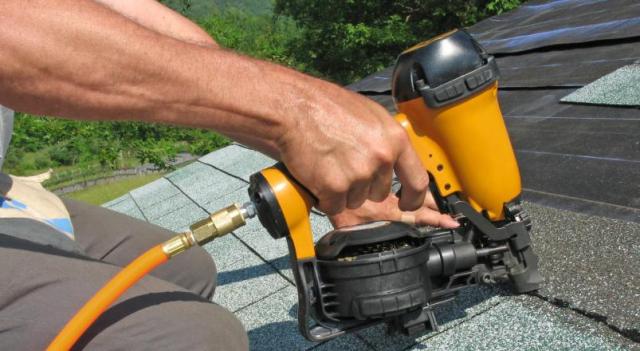When is a Business Roof Inspection Needed?
Knowing when to schedule a roof inspection is crucial for maintaining the integrity of your commercial property. Regular roof inspections can save significant costs and prevent potential hazards. Factors such as the age of your roof, recent severe weather events, and visible signs of damage all indicate that it’s time for a professional evaluation. In this article, we will discuss the business roof inspection benefits, key indicators that signal the need for an inspection, commercial roof inspection frequency, and what to expect during the inspection process. Understanding these aspects ensures your business remains safe and secure under a well-maintained roof.
Understanding the Importance of Roof Inspections
Regular roof inspections are essential for preventing costly repairs and protecting your investment. By identifying minor issues before they escalate, business owners can save money and maintain the integrity of their property. These inspections help spot wear and tear, water damage, or missing shingles, allowing timely interventions that keep your roof in optimal condition.
Moreover, routine inspections play a crucial role in extending the lifespan of your roof. Most commercial roofs are designed to last for several years, but neglecting maintenance can shorten their life expectancy. Regular assessments ensure potential hazards are addressed promptly, enhancing the roof's durability and performance. Businesses that invest in consistent roof inspections often find that their roofs last years longer than those that do not.
Additionally, understanding the impact of local weather conditions is essential. Regions prone to heavy rain, snow, or extreme temperatures can place additional strain on roofing materials. Inspections tailored to these local factors can help mitigate weather-related damage, ensuring your roof withstands the elements effectively. By staying proactive and scheduling regular roof inspections, business owners can safeguard their property against unforeseen weather events and maintain a healthy, functional roof.
Key Indicators That Signal the Need for an Inspection
Identifying leaks and water damage is crucial for maintaining the integrity of your business's roof. Water stains on ceilings or walls and musty smells may indicate hidden leaks. Regular roof inspections can catch these issues early, preventing costly repairs and extensive damage to your property.
It is crucial to be vigilant about the signs of wear and tear on your roofing materials. Look for worn roof edges with missing or worn granules, curled asphalt shingles, and any cracked or missing shingles. Additionally, the presence of mold or algae on shingles, unusual dips on the roof’s surface, and nails that have popped up are indicators that your roof may require immediate attention. Addressing these problems promptly can avoid further deterioration and potential leaks.
Checking for debris accumulation is equally important. Leaves, branches, and other debris can trap moisture and promote mold and mildew growth. Heavy debris can stress your roofing system, leading to structural damage. Regular inspections ensure that your roof remains clear and functional, extending its life and protecting your business investment.
How Often Should You Schedule Inspections?
Understanding how often to inspect a commercial roof is key to maintaining its integrity. The recommended commercial roof inspection frequency largely depends on the type of roofing material. Flat roofs require more frequent checks, ideally every six months, due to their susceptibility to pooling water and debris accumulation. Pitched roofs can often be inspected annually unless specific issues arise.
The age of your roof plays a significant role in determining when to schedule a roof inspection. Older roofs tend to have more wear and may require inspections every six months to detect potential problems early. Additionally, the local climate can impact the frequency of inspections. In regions experiencing severe weather conditions, such as heavy rain, snow, or extreme heat, more frequent inspections are advisable to ensure your roof remains in optimal condition.
Creating a proactive maintenance schedule is essential to safeguard your investment. By establishing a routine inspection plan, you can identify issues early, prevent costly repairs, and extend the lifespan of your roof. Integrate inspections into your annual maintenance calendar to ensure your roof is always prepared to handle the elements, thereby protecting your business and its assets.
What to Expect During a Roof Inspection
A roof inspection is vital for ensuring the longevity and safety of your business's roof. Typically, the inspection begins with a thorough visual assessment from the ground and, if necessary, includes closer examinations using ladders or drones. Inspectors follow a detailed checklist, evaluating the overall condition of the roof, checking for visible signs of damage, and assessing the integrity of flashing, gutters, and drainage systems.
Common areas of focus include identifying missing or damaged shingles, checking for signs of leaks, and examining the condition of roof penetrations such as vents and chimneys. Inspectors also pay close attention to areas prone to pooling water, as stagnant water can lead to significant structural issues over time. Additionally, they evaluate the insulation and ventilation systems, which are crucial for maintaining a healthy roof environment.
After the inspection, you will receive a comprehensive report detailing the findings. This report outlines any issues discovered during the assessment and recommends necessary actions to address them. Recommendations may range from routine maintenance tasks to urgent repairs, ensuring your roof remains in optimal condition. Understanding these findings allows you to make informed decisions regarding your roof's upkeep and helps prevent costly issues in the future.
Submitting a Claim to GNY
To submit a claim after a roof-related loss refer to the guides here.
This material is informational only. It is not intended to be, and is not in fact, a statement, in whole or in part, of GNY’s underwriting guidelines. Nothing said here amends or affects the interpretation, application, or both, of the coverage provisions in any GNY insurance policy; nor do the statements made here constitute a representation that insurance coverage exists for any loss under any GNY policy. Coverage depends on facts and circumstances of each individual claim or loss, the applicable laws, and the policy provisions in the GNY insurance policy.
